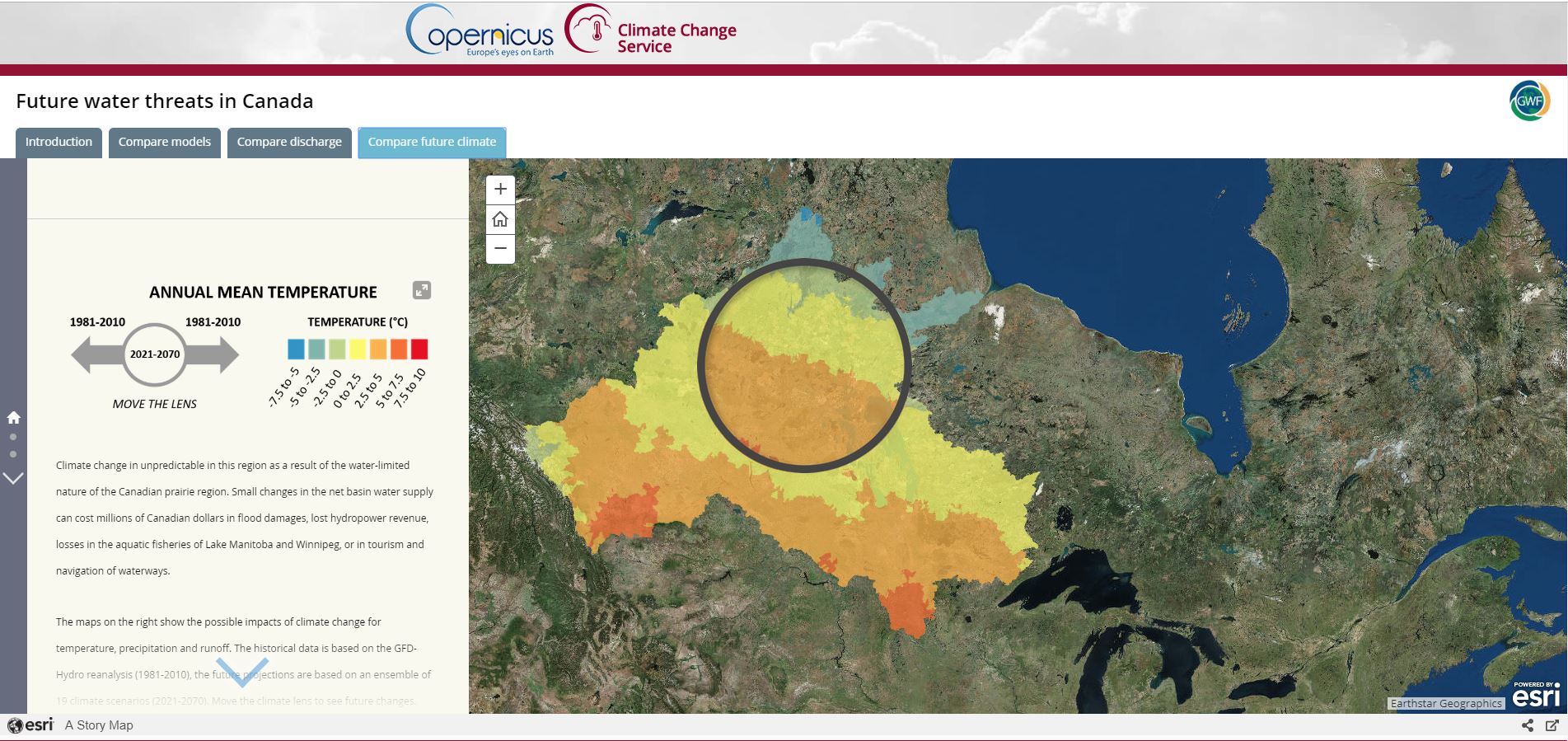
IMPC researcher featured as Canadian showcase for Copernicus Climate Change Service
Dr. Tricia Stadnyk mobilizes research knowledge with Manitoba Hydro to explore uncertainty in future streamflows and data inputs.
Copernicus is as a central European data hub to support decision-making around the sustainable management of resources and provides information services focused on six themes – atmosphere, marine, land, security, emergency and climate change. The Copernicus Climate Change Service (C3S) is the most recent of these, coming on line operationally in July 2018.
A recent C3S product showcases regional projects to demonstrate best practices around user uptake of high-impact and relevant climate information from the C3S Climate Data Store. The Canadian showcase features Global Water Futures and work by Integrated Modelling Program for Canada (IMPC) researcher Dr. Tricia Stadnyk.
Dr. Stadnyk’s work uses the Hydrological Predictions for the Environment (HYPE) model to explore uncertainty in projected streamflow under future climates and the uncertainty associated with the choice of data products used to drive the modelling work.
In the C3S showcase, Dr. Stadnyk and her team use output from the fifth generation of the Coupled Model Intercomparison Project (CMIP5) - available from the C3S Climate Data Store - to drive future streamflow projections. Three historic, reanalysis climate datasets (NARR, ERA-I and HydroGDF) are used for bias correction and downscaling for intercomparison. The research team also created two versions of HYPE - one with basin regulation (i.e., hydroelectric structures, reservoirs, irrigation withdrawals, etc.) represented, and another with regulation removed and where land cover was reverted back to its pre-regulation state – to run for past and future time periods using the HydroGDF dataset.
Results indicate that future runoff in the Nelson-Churchill basin could be up to 40 per cent higher in some scenarios relative to the 1981-2010, but this is highly variable across the basin. Conversely, snow water equivalent is projected to decrease across all basins under future climates, indicating a distinct shift in seasonality
Read more here: https://gwf.usask.ca/articles/2019/hype-int-impc.php
Access the Canadian Showcase here: http://climateservice-global.eu/gwf/

